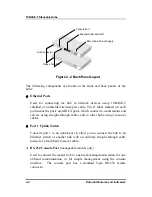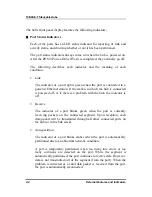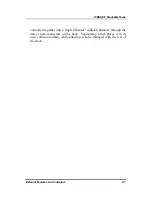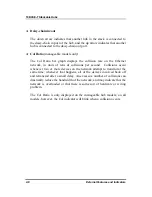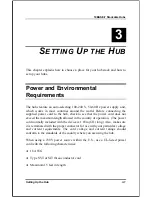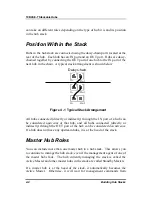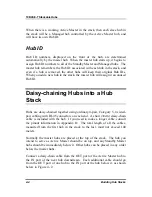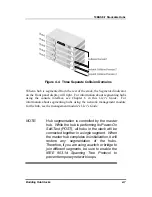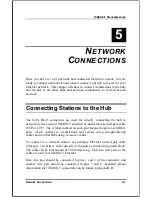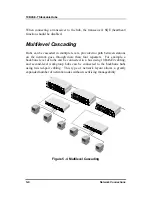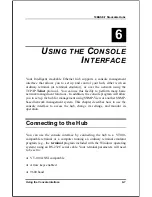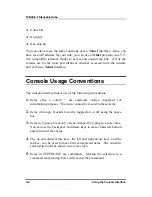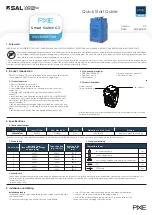
10BASE-T Stackable Hubs
can take on different roles depending on the type of hub it is and its position
in the hub stack.
Position Within the Stack
Hubs in the hub stack are connected using the daisy-chain ports located at the
rear of the hub. Each hub has an IN port and an OUT port. Hubs are daisy-
chained together by connecting the OUT port of one hub to the IN port of the
next hub in the chain. A typical stack arrangement is shown below.
In
Out
Out
Out
In
Daisy Chain
In
Figure 4 -1 Typical Stack Arrangement
All hubs connected (directly or indirectly) through the IN port of a hub can
be considered
upstream
of that hub, and all hubs connected (directly or
indirectly) through the OUT port of the hub can be considered
downstream
.
If a hub does not have any upstream hubs, it is at the
head
of the stack.
Master Hub Roles
You can include more than one master hub in a hub stack. This allows you
to continue to manage the hub stack, even if the management agent of one of
the master hubs fails. The hub currently managing the stack is called the
Active Master and other master hubs in the stack are called Standby Masters.
If a master hub is at the head of the stack, it automatically becomes the
Active Master. Otherwise, it will wait for management commands from
4-2
Building Hub Stacks

